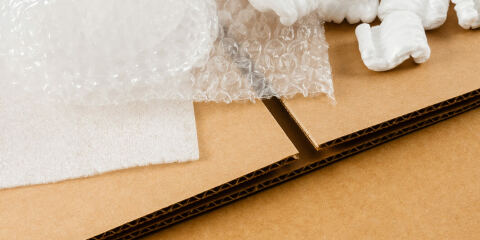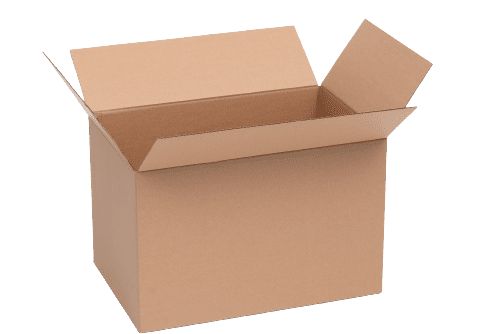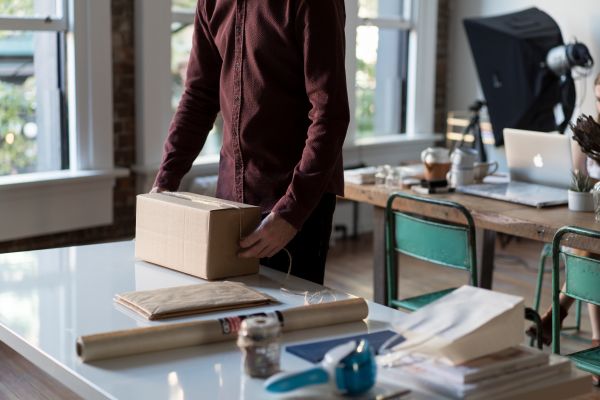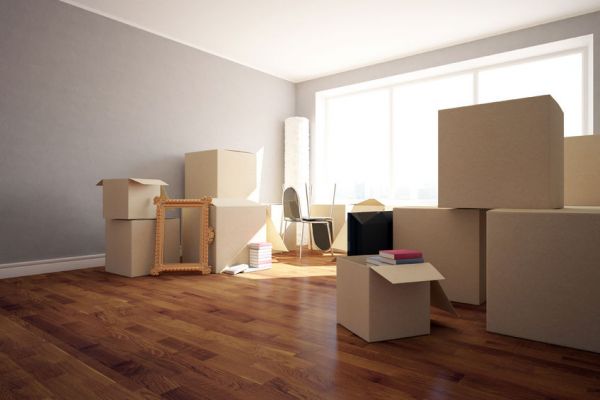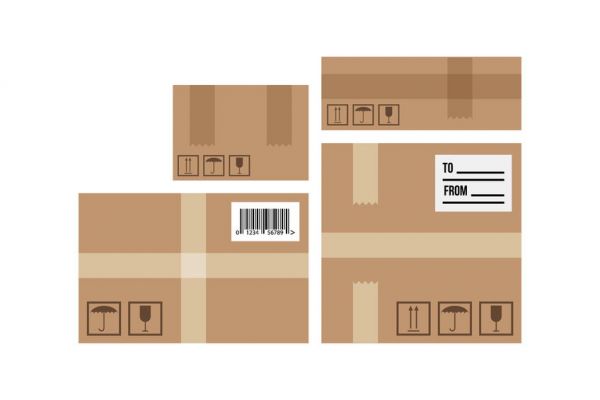It is a truth universally acknowledged that you'll run out of packing supplies at some point during your move. The dawning realization you do not have the right kind or enough packing supplies and have to run out to the store partway into your move, killing your momentum and frustrating the seemingly-never ending packing process, is a time-worn tradition that even the most prepared among us have faced.
Enter the ultimate list of essential packing supplies. In this post, we will cover every packing supply you could possibly need for your move, including:
- Containers, such as boxes, plastic bins, or large reusable bags
- Sealing and binding materials, such as tape or rope
- Cushioning materials, such as packing paper or bubble wrap
- Other useful tools, such as a tape gun, permanent markers, and moving straps
We’ve even included some tips on how much of each you may need, as well as when to use new vs. used packing supplies.
TSI TIP: It is important to note that every move is different and you may not need all of these items for your specific move. Before you run out and buy everything on the list, carefully look at your belongings and consider what you will actually need to pack everything up.
Let’s get packing!
Containers
You can’t get through a move without boxes or containers of some kind to hold your belongings. Cardboard boxes are the go-to for a reason, but plastic bins and even large reusable bags can be used to transport stuff in a pinch. You’ll need:
- Boxes
- Plastic bins
- Large reusable bags (such as blue Ikea bags)—These are best used for carrying items already in boxes, like puzzles, or large soft things, like pillows or stuffed animals. Due to the nature of moving belongings in bags and the potential for damage, you should only use bags for items you plan to bring with you personally.
Number of Bedrooms |
Number of Boxes |
|---|---|
| 1-2 | 8 small boxes 4 medium boxes 4 large boxes 2 wardrobe boxes |
| 2-3 | 15 small boxes 6 medium boxes 8 large boxes 3 wardrobe boxes |
| 3-5 | 20 small boxes 12 medium boxes 15 large boxes 6 wardrobe boxes |
| 5-7 | 30 small boxes 18 medium boxes 25 large boxes 10 wardrobe boxes |
| Learn more about types, sizes, and number of boxes you need for a move in our post: How Many Boxes Will I Need for my Move, and What Size Should I Get? | |
TSI TIP: If you’re considering picking up used boxes, there are a few things to keep in mind. Ideally, select boxes that haven’t been broken down or bent, as these will be the most durable of the lot. Used boxes are best for packing lighter, more durable items. New boxes are recommended for heavier, fragile, or larger items.
Learn more in our guide to When To Use Free or Used Packing Supplies.
Sealing and binding materials
These items are necessary for securely tying or binding items together, taping shut boxes, securing moving blankets onto large furniture, or securing several boxes together on a pallet. Regardless of how much or how far you’re moving, you will likely need most of these items:
- Packing tape
- Painters tape
- Twine
- Rope
- Rubber elastics
- Stretch wrap
Cushioning materials
Cushioning materials are essential for protecting your belongings, and not just the delicate ones! For example, packing paper can help prevent scratches, cracks, tears, and other damage you may not anticipate from two sturdy items jostling against each other in transit.
- Packing paper—Packing paper can be used to wrap and cushion just about everything. When packing items like bone china or other ceramics, be careful to avoid using packing materials that contain ink, such as newsprint. These inks can penetrate the delicate surface and can be quite difficult to remove.
- Packing peanuts—If you’re determined to use packing peanuts, make sure you get biodegradable ones and don’t scrimp on the amount. They need to be plentiful and really packed in to prevent shifting and be effective. The proper way to use packing peanuts is to fill the box halfway, insert your item, then fill the rest of the box with peanuts. Gently shake the box to help the peanuts settle, then add more.
- Bubble wrap—Different sizes of bubble wrap are useful for different things. Smaller bubbles provide less protection against shock or impact, but greater protection against scrapes and scratches. Larger bubbles are filled with more air, making them ideal for providing additional padding. Learn more in our guide to Different Sizes Of Bubble Wrap And When To Use Them,
- Foam sheets
- Cardboard sheets
- Furniture pads, furniture covers, and moving blankets for wrapping and protecting furniture. Professional movers will typically provide these items, but it’s always a good idea to double check.
TSI TIP: Foam sheets, cardboard sheets, and bubble wrap are useful packing materials for securely wrapping and packing up framed artwork. Learn more about how to safely pack your artwork.
Useful tools
From pens and pencils to moving straps, these items will make your move easier in measurable ways.
- Tape gun—A must-have item for putting together and sealing cardboard boxes. It’s worth it to pay extra for a good one! You don’t want to waste time dealing with a cheap tape gun, trust us.
- Permanent markers—Use permanent markers to number or label your boxes with the items contained within, whether the box is fragile or heavy, and what room it should be placed in upon arrival. Make a handwritten list or take pictures of the boxes and how many boxes you have per room to ensure all your items make it to the correct destination.
- Tool set—Tools are important to have on hand for disassembling furniture. Keep your toolset handy—there’s a good chance you’ll need it on the other side of your move as well, and you don’t want to have to dig around for it in your moment of need.
- Moving straps—These handy tools make it easy to lift and move cumbersome furniture.
- Scissors and a box cutter—These items are needed for reopening boxes when they’ve been packed incorrectly (or when you accidentally put your keys in), as well as for cutting down materials to size.
- Plastic resealable bags—Useful for small items that would otherwise be packed loose and for storing disassembled furniture screws, nuts, and bolts.
TSI TIP: Tape the plastic bag containing parts to the main piece it goes with for easy matching on the other end.
- Garbage bags—For all the garbage that packing and moving creates. Learn more about how to reduce waste & get rid of trash after you move.
- Gloves—Packing and moving is rough work. Protect your hands with gloves.
- Label stickers—Since it can sometimes be difficult to see a marker on a darker box, these stickers can be useful for clear labelling of boxes (and even color coding by room).
- Pens—For making notes as you pack (or adding to your to-do list).
- Paper or notepad—Helpful for writing lists, making notes about the move, or tracking the number and content of boxes.
Conclusion
What constitutes essential packing supplies varies from move to move, but you will definitely need containers, sealing and binding materials, cushioning materials, and a variety of handheld tools to get all of your stuff packed. Avoid a mad-dash to the store to pick up more boxes by reviewing your home and its contents, and preparing a list of what you need in advance.
Need more help with your move? Check out our ultimate guide for How to Prepare for a Move.
